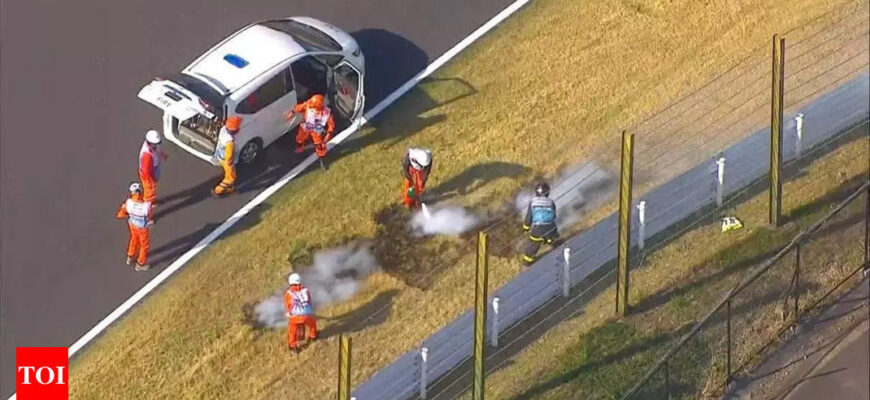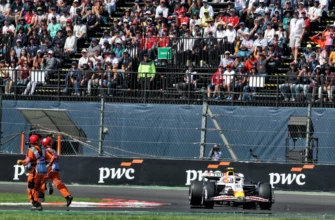The FIA has proactively responded to grass fires that interrupted the second practice session at the Japanese Grand Prix.
On Friday, two separate fires erupted, triggered by sparks from Formula 1 cars igniting the dry grass, leading to red flags.
In the practice session disrupted by these incidents, Oscar Piastri outpaced his McLaren teammate Lando Norris, securing the top two positions.
The FIA stated, `While investigating the causes of the fires during FP2, our immediate priority is to implement preventative measures for tomorrow’s sessions.`
They added, `The grass has been cut as short as possible, and any loose, dry grass has been cleared from the affected areas. Before tomorrow`s sessions, the grass will be watered, and dedicated response teams will be positioned around the circuit.`
A similar grass fire incident occurred during practice at the previous year`s Chinese Grand Prix. The FIA`s subsequent actions at that event successfully prevented any further fires throughout the rest of the weekend.
Suzuka`s conditions for the final practice and qualifying on Saturday are expected to be similar to those experienced on Friday.
Despite mild temperatures, the combination of dry grass and sparks from the low-riding F1 cars seems to be the cause of the issue at Suzuka. Current Formula 1 car designs prioritize running as close to the ground as possible for optimal performance.
The weather forecast for Sunday`s race anticipates rain leading up to the event. However, even in dry conditions, it is suggested that grass fires should not be a concern during the race itself.
According to Ted Kravitz, `Sparks are less frequent during the race due to lower speeds, potentially preventing interruptions to the Grand Prix. Nevertheless, circuit officials might consider thoroughly wetting the entire track area.`






